Table of Contents
Food webs are crucial as they depict the complex relationships between different species in an ecosystem. They illustrate the flow of energy and matter, showcasing how organisms interact through feeding relationships. Understanding food webs is essential for ecosystem management, biodiversity conservation, and predicting the impacts of changes in populations or environmental conditions. They highlight the interdependence of species, emphasizing the delicate balance that sustains ecosystems. Here we have discussed a few more details about the food web.
Define Food Web
A food web is a complex system that shows how different organisms in an ecosystem interact with each other through the transfer of energy. Picture it like a giant web of interconnected relationships among various plants, animals, and microorganisms. In this web, organisms are grouped into categories based on their roles in the ecosystem. At the base of the food web are producers, like plants, which make their own food through photosynthesis. Herbivores, or animals that eat plants, consume the producers. Carnivores then eat herbivores, and so on.
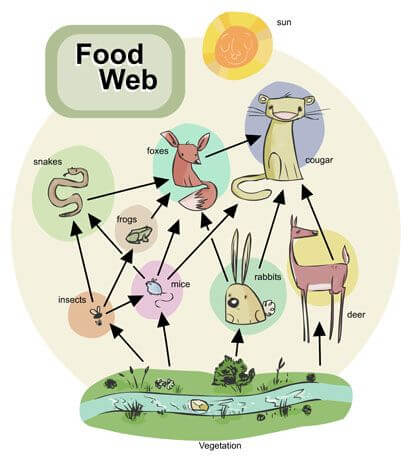
Decomposers play a crucial role by breaking down dead organisms and organic matter, returning nutrients to the soil. What makes a food web fascinating is its complexity – many interconnected paths exist, showcasing the diversity of interactions in nature. If one species is affected, it can have ripple effects throughout the entire web, impacting other organisms. Essentially, a food web illustrates the intricate dance of life, illustrating who eats whom and how energy flows within an ecosystem.
Examples of Food Web
Here we have discussed a few examples of the food web. These examples will illustrate and highlight the intricate and interconnected relationships between various organisms within different ecosystems, showcasing the flow of energy and the balance that emerges from these interactions.
1. Forest Ecosystem:
- Trees and plants (producers) provide food for herbivores like deer and rabbits (primary consumers).
- Predators such as foxes and owls are secondary consumers, preying on herbivores.
- Wolves and eagles act as tertiary consumers, maintaining the balance.
2. Aquatic Ecosystem:
- Algae and aquatic plants (producers) form the base of the food web.
- Zooplankton and small fish (primary consumers) feed on producers.
- Larger fish and turtles (secondary consumers) consume the primary consumers.
- Sharks and dolphins (tertiary consumers) are at the top of the aquatic Food Chain.
3. Grasslands Ecosystem:
- Grass and wildflowers (producers) are consumed by herbivores like bison and zebras (primary consumers).
- Predators such as snakes and birds feed on herbivores (secondary consumers).
- Lions and wolves (tertiary consumers) are top predators in the grassland ecosystem.
4. Desert Ecosystem:
- Cacti and desert shrubs (producers) adapt to arid conditions.
- Insects and rodents (primary consumers) consume plant matter.
- Snakes and birds of prey (secondary consumers) hunt primary consumers.
- Coyotes and foxes (tertiary consumers) play a role in controlling the population of smaller animals.
5. Oceans Ecosystem:
- Phytoplankton and seaweed (producers) support the marine food web.
- Small fishes and shrimp (primary consumers) feed on the producers.
- Squid and larger fish (secondary consumers) consume primary consumers.
- Sharks and seals (tertiary consumers) are apex predators in the ocean.
6. Urban Ecosystem:
- Trees and urban plants (producers) contribute to the city environment.
- Pigeons and squirrels (primary consumers) thrive in urban settings.
- Stray cats and hawks (secondary consumers) may prey on primary consumers.
- Urban predators like foxes (tertiary consumers) help regulate the population of smaller urban animals.
Food Chain
A food chain is a way of showing how living things get their energy from food and pass it along to others. It starts with plants, like grass or trees, which make their own food using sunlight. These plants are eaten by animals, like rabbits, which are then eaten by predators, such as foxes. The chain continues as each animal becomes food for another. It’s a way of illustrating who eats whom in an ecosystem. Every step in the food chain is called the tropic level. The energy from the sun is transferred through these levels, and each time an organism is eaten, energy moves along the chain. This interconnected flow of energy is crucial for sustaining life in different ecosystems.
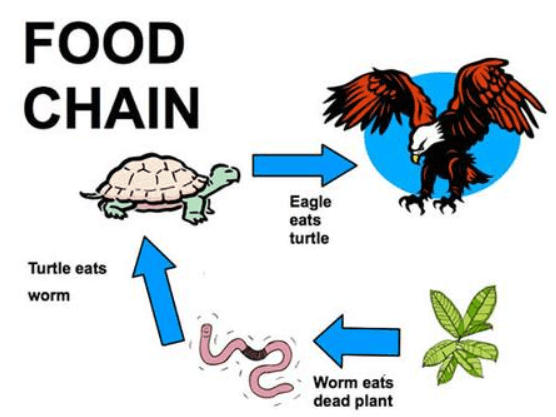
Components involved in Food Web
A food web consists of producers, consumers, and decomposers. Producers (plants) create energy through photosynthesis. Consumers are divided into primary (herbivores), secondary (carnivores), and tertiary (top carnivores) consumers. Decomposers break down organic matter, completing the cycle.
| Structure of a Food Web | |
| Components | Description |
| Producers | Producers are usually plants that produce their own food through Photosynthesis, converting sunlight into energy. |
| Consumers | Consumers are mainly of three types: Herbivores, Carnivores, and Top consumers. |
| Decomposers | Decomposers are organisms, like fungi and bacteria, that break down dead organic matter, returning nutrients to the soil and completing the nutrient cycle. |
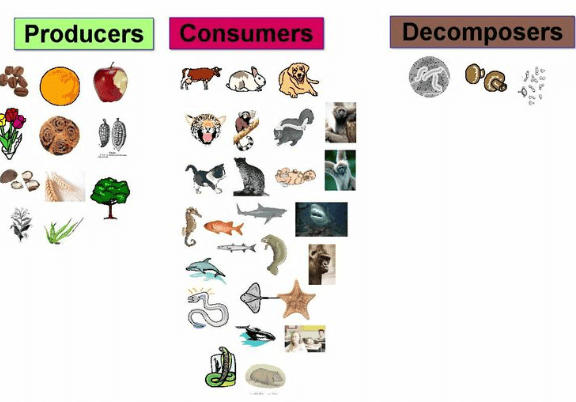
Producers:
Producers are like nature’s chefs. They’re usually plants that whip up their own meals using sunlight, water, and carbon dioxide through a process called photosynthesis. Just as chefs create delicious dishes, producers create energy-rich food for the entire ecosystem, serving as the foundation of the food chain by converting sunlight into the fuel that sustains life.
Consumers
Consumers are the hungry players in nature’s dinner party. Divided into herbivores, carnivores, and top carnivores, they’re the ones enjoying the menu prepared by producers. Herbivores munch on plants, carnivores feast on other animals, and top carnivores are the ultimate predators. Together, they form a dynamic food chain, each playing a crucial role in the ecological banquet.
Consumers are of three different types. These consumer roles shape the intricate balance of ecosystems:
- Herbivores: Herbivores are also known as Primary Consumers. They are plant-eaters like rabbits and deer.
- Carnivores: Carnivores are also known as secondary consumers. They are meat lovers, preying on other animals, like lions and wolves.
- Top Carnivores: They are also known as tertiary consumers. Top carnivores are apex predators, such as eagles or sharks, ruling the top of the food chain.
Decomposers
Decomposers are nature’s recyclers. They’re organisms, like fungi and bacteria, that break down dead plants and animals into simpler substances. Through this process of decomposition, they play a vital role in returning nutrients to the soil, completing the circle of life, and sustaining the health of ecosystems.
Importance of Food Web
Here we have discussed a few points that highlight the importance of the food web.
- Ecosystem Dynamics: Food Webs reveal intricate interactions and dependencies among various species in an ecosystem, providing insights into how energy and nutrients flow through the system.
- Biodiversity: They showcase the diversity of species and the different roles they play in maintaining ecological balance, emphasizing the importance of preserving various organisms for overall ecosystem health.
- Ecosystem Management: Understanding the food web is crucial for affecting ecosystem management, helping to identify key species, potential vulnerabilities, and areas where intervention might be necessary to maintain ecological stability.
- Predicting Impacts: By studying food webs, scientists can anticipate the consequences of changes such as species decline or environmental disturbances, aiding in the development of conservation strategies and sustainable practices.
- Interconnectedness: Food webs illustrate the interconnected nature of ecosystems, emphasizing that the health of one species can impact others, reinforcing the need for a holistic approach to ecological conservation and management.
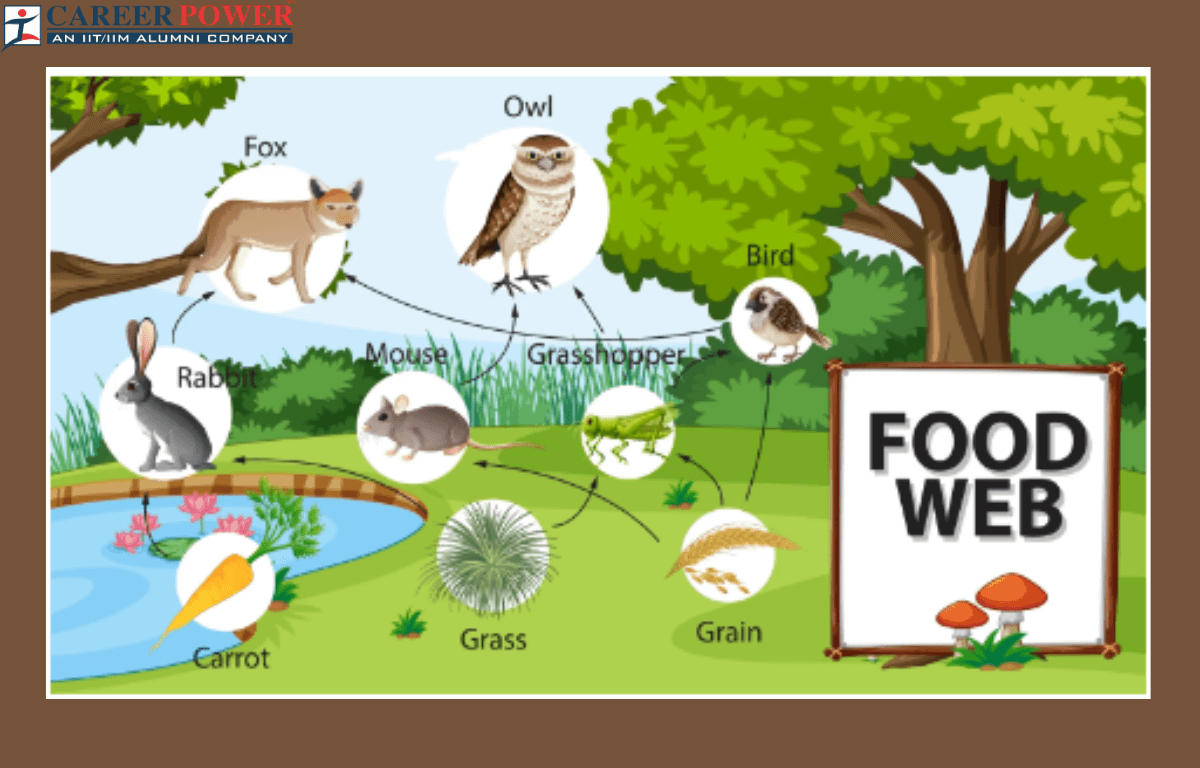
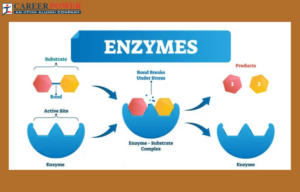 Enzymes: Definition, Functions, and thei...
Enzymes: Definition, Functions, and thei...
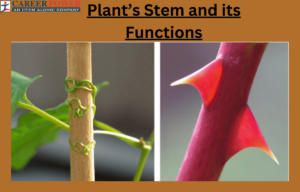 Plants Stems - Structure, Function of a ...
Plants Stems - Structure, Function of a ...
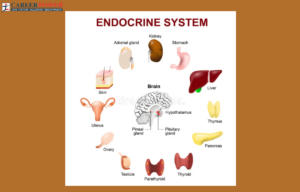 Human Endocrine System, List of Endocrin...
Human Endocrine System, List of Endocrin...
